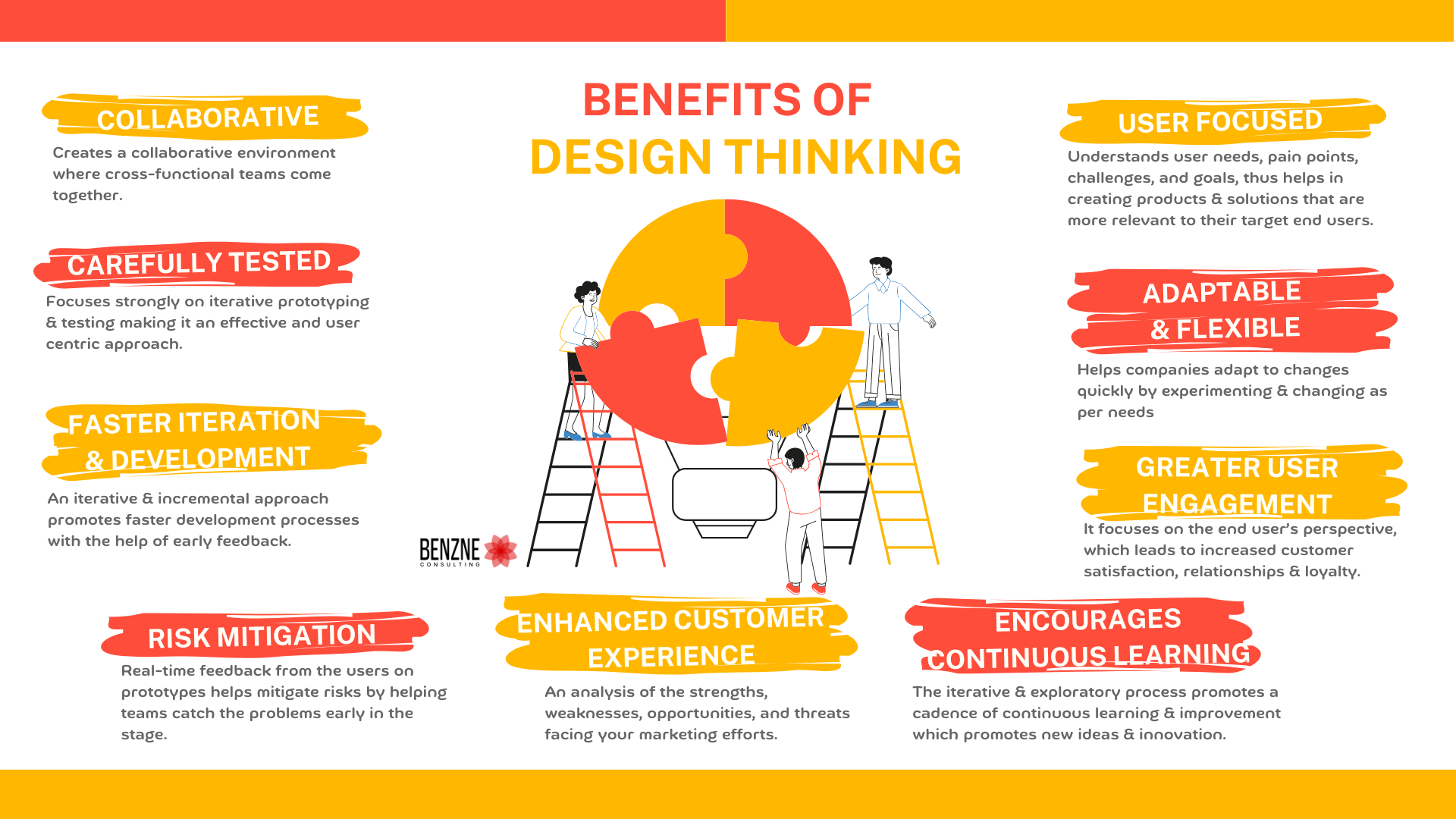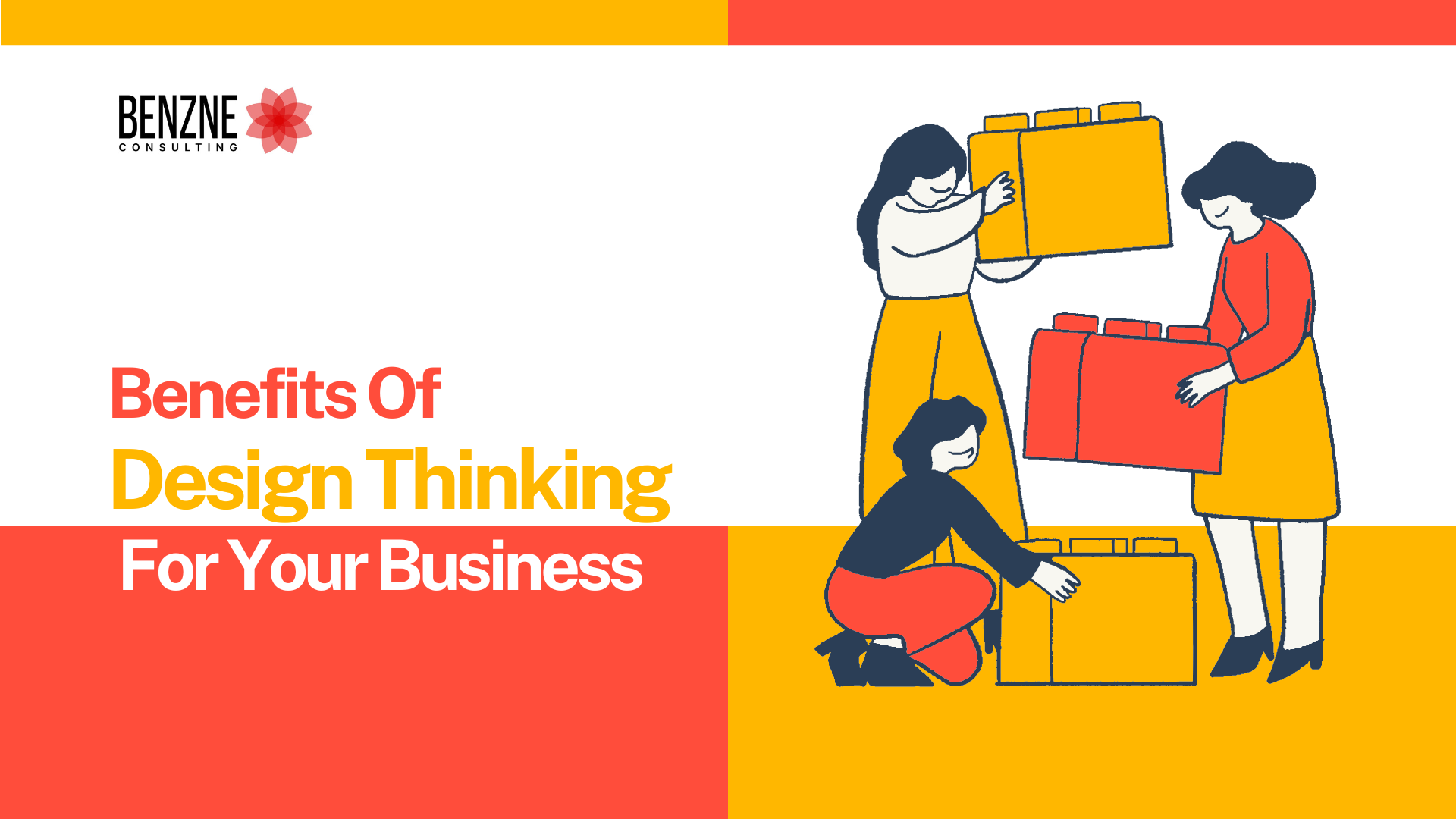Introduction
To stay relevant and have a competitive edge in today’s fast-paced and frequently changing world, innovation and customer centricity is a must. Organizations must change their thought process of solving customer problems, meet their articulated and unarticulated needs and to pivot to shifting market demands and new business realities.
Let’s take a moment and think why organisations like Nokia, Kodak, and Blackberry who were once market leaders lost their domination. Not pre-empting which way consumer behavior is shifting and what technological disruption are required to move to that direction can cost businesses. This has to be followed up with fast, agile execution and delivery along with frequent and effective feedback mechanisms to sustain the competitive advantage over a period of time.
While organizations move towards agile ways of working and delivering fast, they also need a shift in the way they understand user needs and solve it with innovation that suits them in the best possible way. This is exactly where design thinking comes into pthe icture. It is more than just a problem-solving approach. It is an effective and efficient way that puts empathy, collaboration, and innovation at the center of decision-making. By focusing on understanding the user and solving problems, design thinking helps businesses and organizations come up with new opportunities and deliver value to the customers continuously.
But what exactly are the benefits of design thinking for your business? How can your organization gain with the help of design thinking is what this blog is all about. In this blog, we’ll explore the key Design Thinking advantages that can add immense value to your business and how it can transform the way you approach perceived and non-perceived challenges and solve complex problems.
What is Design Thinking
Design thinking is a powerful and human centered approach that helps solve problems by deeply understanding the user’s needs. It emphasizes on challenging the assumptions, redefining the problems and creating solutions which are best for the users. Design thinking flow spreads across five stages:
- Empathize with the users – Putting yourself in the end user’s shoes to understand their problems, challenges and pain points
- Define the problem – Clearly define the problem you want to solve
- Ideate Potential solutions – Come up with different multiple solutions for the same problem
- Prototype – Create simple versions of your solution to test
- Test – Take your solutions to the end users to get feedback and build on top of it
Design thinking focusses on empathy and collaboration. It encourages teams to diverge and explore all perspectives and then come up with the best solution. It is not a one time activity but an iterative approach that helps organizations quickly develop, refine and deliver value to the users.
Benefits Of Design Thinking
Design Thinking is a simple yet effective approach that enables businesses to steer through challenges with innovative solutions that promotes user centricity and iterative problem solving. Let’s see what are some of the design thinking advantages:
1. Collaborative
Design thinking creates a collaborative environment where cross functional teams come together, collate divergent perspectives from all the skillset and then come up with the best possible solution. This promotes creativity and results in well rounded fully baked innovative solutions. It also promotes shared ownership and collective problem solving and brings in the One Team mindset and enhances communication within the teams.
2. User-Focused
The base foundation of design thinking is that it’s user centric. It promotes teams and individuals to put themselves in the end user’s shoes and then solve their problem. By understanding user needs, pain points, challenges, goals in the center, businesses can create products and solutions that are more relevant to their target end users. This is one of the main design thinking advantages which helps businesses with growth and increased customer satisfaction.
3. Carefully Tested
Design thinking focuses strongly on iterative prototyping and testing making it an effective and user centric approach. Instead of launching the product/solutions based on assumptions or someone’s words, ideas are quickly prototyped and taken to the end users to get real time feedback. This approach helps teams identify flaws, issues and gaps before the solution is implemented or scaled. By prioritizing inputs from the users, design thinking ensures the product/solution actually solves the problem reducing the risk of failure.
4. Adaptable and Flexible
Design thinking is iterative in nature. This helps businesses to also adapt to agile ways of working. Change in customer needs, and new technologies emerging in the market require pivoting quickly needing new solutions. One of the design thinking benefits is that it helps companies adapt to changes quickly by experimenting and changing as per needs.
5. Faster Iteration and Development
Iterative and incremental approach of design thinking promotes faster development processes with the help of early prototyping and feedback. Teams do not have to wait till everything is analyzed, planned, and developed. Instead create and validate ideas faster allowing the identification of gaps and areas for improvement earlier and reducing risks.
6. Greater User Engagement
One of the main benefits of design thinking is the focus on the end user’s perspective. Throughout the design process, users are involved. From interviewing the users, observing them in the act, talking to the end users, till quickly testing the prototypes with the users to take feedback, design thinking promotes a huge deal to enhance the user engagement. Which in turn leads to increased customer satisfaction, relationships and loyalty.
7. Risk Mitigation
With real time feedback from the users on prototypes and the nature of iterative process, design thinking helps mitigate risks by helping teams catch the problems early in the stage. Businesses can arrest and address potential bottlenecks, issues or any concerns early that reduces any issues before they escalate which in turn reduces the possibility of costly failures or loss of business
8. Enhanced Customer Experience
The whole idea of design thinking is to understand the end user’s pain and solve it with innovative solutions. This by default promotes improvement in customer experience and satisfaction. Solutions, products, and services that come out as a result of these processor approaches are typically more responsive and best suited to a user’s needs enhancing overall satisfaction
9. Encourages Continuous Learning
Design thinking stages involve empathising with the end user, defining the problem, ideating the solution, prototyping, and then implementing. These stages run in cycles. The whole iterative and exploratory process promotes a cadence of continuous learning and improvement. Teams are empowered and enabled to experiment, learn from their mistakes, and then pivot in the next iteration. This promotes new ideas and feedback enhances innovation.

Similarities Between Design Thinking and Agile. Why Is Design Thinking so Important?
Design Thinking and Agile share several key similarities, making them complementary methodologies for innovation and product development. These similarities make Design Thinking and Agile effective when used together, enabling teams to innovate quickly while maintaining user-centered focus.
Here’s how they are similar:
| Attribute | Agile | Design Thinking |
| User Centric Focus | Relies on continuous feedback from the end users to refine the product | Process starts by deeply understanding the end user through empathy and observation |
| Iterative Approach | Uses sprint or cadences to deliver small functional increments of products | Teams develop prototypes and validate them refining ideas based on feedback |
| Collaboration | Fosters collaboration among teams through ceremonies like daily standups sprint review and retros | Brins in one team mindset with diverse perspectives to ideate and solve the problems |
| Flexibility and Adaptability | Promotes adjusting priorities and goals based on user needs | Promotes adapting to new ideas through feedback loops |
| Focus on Problem Solving | Helps teams solve problems iteratively through development and feedback | Starts by identifying and defining specific user problems |
Why Is Design Thinking so Important?
Design thinking offers an effective method to solve complex human centric problems. This helps teams drive innovation and solve real time problems of the end users. Design thinking benefits are multifold, here is how it becomes important in the context of current fast paced environments:
- User centric Solutions – Design thinking puts the needs and experiences of end users at the center by empathising with them. When there is a deep understanding of the pain points of end users, challenges, goals, teams can create product and solutions which are more suitable and relevant for them which creates the maximum impact
- Fosters Innovation – Design thinking promotes cross functional teams to collaborate and brainstorm ideas which come from multiple perspectives. This divergent exploration brings in creativity. It challenges biases and assumptions and promotes out of the box thinking making it a valuable approach to innovate
- Reduces Risks – Iterative and incremental nature of design thinking and getting the quick prototypes tested / validated from the end users ensures issues, bottlenecks are arrested early and creates and environment where things are taken care of before scaling thus reducing risks and failures
- Enhances Collaboration – Design thinking promotes cross functional collaboration which brings teams and individuals from multiple skillset together. This enables creativity and fosters a shared understanding of the problem resulting in well rounded and solutions that matter to the end users
- Increases Agility – Interactive and incremental approach of design thinking enables teams and businesses to remain agile. It helps in inspecting and adapting when needed and helps teams to respond quickly to user feedback and market changes
How can consulting firms help to implement the Design thinking Process?
Design Thinking Consulting firms can play a vital role in helping organizations implement the design thinking process effectively and ensure it becomes part of the organization’s culture. Here is how consulting firms can help:
- Expert Guidance – Consultants are subject matter experts who bring in strong knowledge and experience in design thinking. They help teams through each step of the process, helping them practice empathising with the end users and hand hold them through all the other stages by guiding teams with industry best practices and templates to avoid common pitfalls
- Tailored and customised workshops and training – Consultants can bring in their expertise to customise and tailor workshops and training sessions for the employees to bring in awareness. Curated and contextual design thinking training course helps in upskilling the team and building a strong foundational understanding of the process itself
- Facilitating the ceremonies and the cross collaboration – Consultants bring in their skillset of facilitation and resolving conflicts. They break the silos within the organizations by bringing in teams together. This helps foster cross functional team work which is crucial for design thinking
- Outside In Perspective – Consultants bring in an unbiased, outside in perspective which exposes teams with great industry standards and help teams come out of their comfort zones and set higher benchmarks
- Prototyping and testing support – Consultants handhold teams in developing their prototypes and conduct user tests and interviews with readily available tools and techniques with templates.
- Embedding a design thinking mindset – Why help teams and organizations integrate design thinking mindset into their culture. This long term transformation fosters a mindset of continuous testing, experimenting and innovation which is always beneficial to the businesses
Conclusion
Design thinking is not just a one time activity or set of practices. It is a mindset and culture which helps teams to innovate and improve user experience and customer satisfaction. Benefits of design thinking are at multiple levels and help businesses stay relevant in the current fast paced world. One of the main design thinking advantages is that it helps businesses create more user relevant and impactful solutions with the help of an empathy driven, iterative and incremental approach. Faster prototyping reduces risks and helps teams build solid well rounded solutions.
Design thinking breaks the siloed ways of working by encouraging collaboration. This helps in leveraging diverse perspectives to solve complex problems. Its nature of adapting and flexibility is the best way for businesses to navigate the changing market needs. Design thinking can be used in every phase of a product / service development be it a new product, refining services, solving internal challenges it provides a method to madness to drive growth and solve problems. You can reach out to Benzne’s design thinking consulting team to explore how we can support your Design thinning journey and help leverage it to add value to your projects, teams and overall business.
With this our blog on “Benefits of Design Thinking for your business” comes to an end. We sincerely hope this helped. Please write to us at “consult@benzne.com” for any suggestions or feedback.
Frequently Asked Questions About Benefits of Design Thinking
1. How does Design Thinking Foster Innovation?
At its core, design thinking promotes understanding the user needs through empathy and helps teams to come up with diverse solutions by brainstorming and divergent thinking. This helps teams to think out of the box and come up with best possible solutions that are impactful. Also, design thinking’s iterative nature with rapid prototyping and testing enables teams to experiment and refine ideas quickly. This approach reduces the risks and failures which helps teams experiment continuously.
2. How Can Organizations Implement Design Thinking for Innovation?
Here is how a team can apply design thinking framework:
- Empathize with Your Users: It is vital to understand the challenges, needs, goals and behavior of your target users. This can be done by conducting surveys, interviews, observing them in the act or even with empathy maps. Start by deeply understanding the user’s problem and gather insights that help teams to build solutions that really matter and are relevant to the users.
- Define the Problem: Analyse your problems and insights gathered and use fish bone analysis and other techniques to clearly define the specific problem statements that you need to solve. These problem statements should be end user focussed and actionable. This ensures that the entire team is focussed and can brainstorm possible solutions and bring the entire team to a common understanding
- Ideate Creative Solutions: Once the problem statement is written, conduct brainstorming sessions and encourage teams to come up with multiple solutions from different perspectives. You can use mind mapping, role playing and sketching to explore multiple ideas
- Prototype Rapidly: Take the best possible solution which looks promising and quickly create a simple version of the solution or a prototype. These can be your wireframes, low code, no code flows, visual designs etc.Simple sketch, digital mockups or any tool which can make ideas tangible so that they can be tested quickly
- Test and Gather Feedback: Take your prototypes to the real end users to get feedback. Observe how they interact and use your prototype and take their opinions and suggestions. This information can be used to analyse what works, what does not work and what can be improved
- Iterate Based on Insights: Refine your ideas and pivot by using the feedback. This may force you to visit previous steps as new ideas or problems may emerge. This iterative process may continue till your solution is best and efficiently meets the user’s needs
- Implement and Reflect: Once the solution has met your target audience needs, this can be now implemented at full scale. After implementation, reflect on the process to identify the lessons learnt and gaps to improve. This cycle promotes continuous improvement and growth.
3. What Industries Benefit Most from Design Thinking?
Design thinking is highly useful and beneficial across various industries where innovation, user experience and complex problem solving is necessary for instance, technology and IT companies have used design thinking to create user friendly products and services, healthcare organizations have used it to improve patient care and streamline process, financial services have used it to to build intuitive UI and personalize customer experiences. Retail companies enhance customer engagement and shopping experience. Even public sectors have benefited from design thinking to address social issues.
4. What Are Some Common Misconceptions About Design Thinking?
Design thinking faces a lot of misconceptions, the biggest being it is only for the designers. Design thinking advantages are not limited to one field but it is a versatile approach applicable for all fields and industries. Some also believe that design thinking is only to brainstorm creative ideas without practical outcomes. What they miss is the translation of creative insights into actionable solutions through prototyping. Another misconception is to apply design thinking just once and not make it a culture. Successful implementation requires cadences and cycles which helps foster the mindset within an organisation.
5. How Can I Learn More About Implementing Design Thinking in My Organization?
A good start would be to explore awareness/educational resources like training workshops. Enroll in workshops that focus on design thinking principles and frameworks and use cases. Next is to read materials, blogs and case studies on design thinking like “Design Thinking” By Tim Brown or “The Design of Everyday Things” by Don Norman. Engage and join communities and networks dedicated to design thinking and interact with practitioners, consultants and coaches. Also consider a coaching/consulting firm with expertise in Design thinking to guide your organization in the implementation process.

